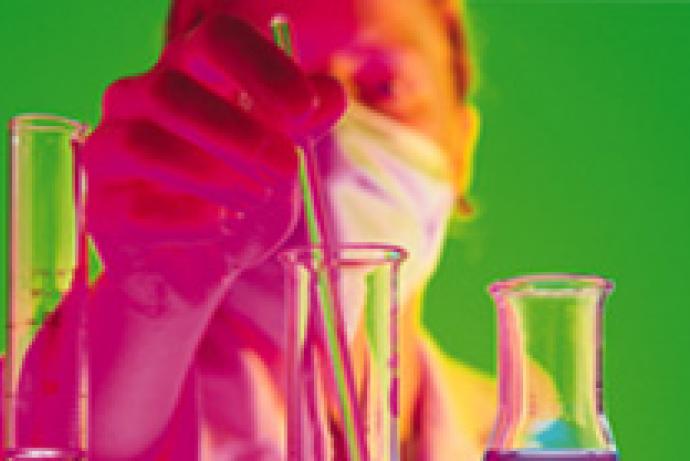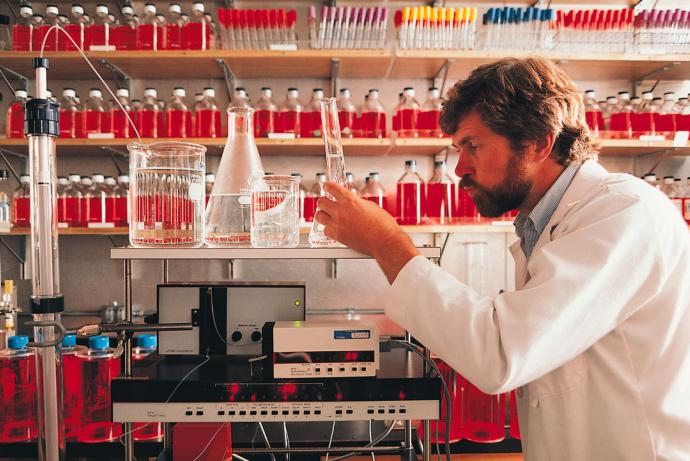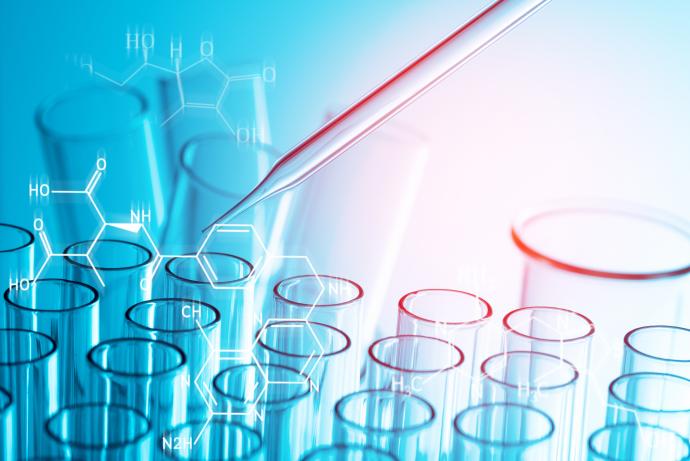DoCE
The aim of this Challenge was to establish improved and increased throughput methods and approaches to better account for bioavailability through development of dosing and measurement strategies of test chemicals in in vitro assays. Successful completion of this Challenge would deliver new capability to ensure concentration-response relationships determined from a range of in vitro test systems that are reflective of human and environmental species in vivo exposure conditions, can enable robust QIVIVE.
Phase 2 not awarded
Phase 1 awarded
Three Phase 1 Awards were made to project teams led by:
- Dr Tanja Hansen, Fraunhofer Institute for Toxicology and Experimental Medicine, £99,371.
- Dr Luise Henneberger, Helmholtz Centre for Environmental Research, £93,194.
- Professor Philipp Mayer, Technical University of Denmark, £99,790.
Challenge launched
Sponsored by Unilever and Shell, the DoCE Challenge aims to establish improved and increased throughput methods and approaches to better account for bioavailability through development of dosing and measurement strategies of test chemicals in in vitro assays. Successful completion of this Challenge will deliver new capability (dosing and measurement of chemicals in vitro) to ensure concentration-response relationships determined from a range of in vitro test systems, that are reflective of human and environmental species in vivo exposure conditions, to enable robust QIVIVE.
Background
Chemical safety assessments continue to transition from a reliance on observing apical toxicity endpoints (e.g. reproductive effects, cancer, allergy) in animal models towards a system that evaluates perturbations of the human-relevant biological pathways involved in these toxicity health effects (so called ‘toxicity pathways’ or ‘Adverse Outcome Pathways’). These pathway test systems use suites of in vitro methods, coupled with computational models to describe the impact of changes in biological processes in response to chemical exposure (Blaauboer, 2015). Despite the promising correlations between in vitro and in vivo ‘dose-response’ relationships, it is widely understood that better quantification and control of exposure of test compounds to cells / tissues in in vitro models would greatly improve the large inter-assay variation and the occasionally low absolute sensitivity of in vitro assays to predict in vivo toxicity.
Quantitative extrapolation from in vitro to in vivo (QIVIVE) is reliant on accurate in vitro ‘dose-response’ relationships, based on actual concentrations in the test system rather than intended (nominal) exposures. Only the freely dissolved, unbound concentration of a chemical (Cfree) is considered available for uptake into organisms, tissues or cells, to cause biological effects (Groothius et al., 2015) and it is critical to understand the concentration-response relationships including its time dependency not simply the ‘dose-response’. Typically, nominal concentrations are used to define in vitro dose-response relationships with concentrations of chemicals in tissues and cells rarely reported. This can lead to large errors with non-specific binding to extracellular matrices (e.g. serum proteins, plastic well plates), evaporation and degradation / metabolism of test chemicals significantly altering the actual concentrations in the test system. The physico-chemical properties of chemicals, such as volatility and hydrophobicity, need to be understood to allow appropriate in vitro test design and subsequent data interpretation. Mathematical models have been developed to estimate the distribution of neutral organic chemicals in in vitro systems and the corresponding chemical activity to facilitate the use of in vitro toxicity data for risk assessment (Armitage et al., 2014). However, these models have a limited applicability domain and specific challenges remain to model and measure hydrophobic, polar and charged chemicals in in vitroassays. For example, hydrophobic chemicals are difficult to dose and maintain at a constant exposure in in vitro assays due to sorption to vessel walls. The use of a co-solvent to dose hydrophobic chemicals can further lead to unrealistically high concentrations above the solubility limit and may alter the interaction with the biological target (Tanneberger et al., 2010). These challenges are compounded further when trying to assess chemical mixtures (e.g. UVCBs - Unknown or Variable composition, Complex reaction products or Biological materials) which contain constituents with a range of physico-chemical properties.
The use of improved dosing systems to compensate for the loss of test chemicals in in vitro assay systems (e.g. partition-controlled dosing systems) offers a potential solution for better controlling and quantifying exposures in vitro. A number of studies have demonstrated that such approaches can maintain constant concentrations of test chemicals in in vitro systems and compensate for losses (e.g. due to evaporation, sorption) and eliminate the need for co-solvents (Kramer et al., 2010; Smith et al., 2010). Such developments could extend our ability to characterise concentration-response relationships for a wider range of chemical types being developed across the bioscience sector (e.g. hydrophobic, volatile and unstable chemicals). A recent study compared the dose-dependent hormonal responses of H295R cells to 4-nonylphenol using two different dosing regimes (solvent versus partition-controlled). Whilst similar dose-dependent responses were observed, the partition-controlled system resulted in an up to 2-fold increase in progestogen and corticosteroid levels at the free concentration (Gilbert et al., 2015). There has been good progress made recently with respect to the development of improved in vitro dosing systems, however, their routine use remains limited to low throughput assays due to technical challenges associated with their use in multi-well format (dosing and measurement) and also the wider acceptance of these approaches by the scientific and regulatory communities. This challenge aims to:
- Develop a framework to describe when and how to select appropriate dosing technologies to enable improved characterisation of bioavailable exposures in vitro for a diverse range of chemical types.
- Develop increased throughput methods for controlled dosing and measurement of chemical concentrations in in vitro assays to enable their uptake, application and use in risk-based decision making; and a strategy to maximise the potential for regulatory acceptance of the approaches developed.
3Rs benefits
A number of animal-based studies have been, and continue to be used in certain industrial sectors to inform the safety and efficacy of chemicals in commerce (e.g. repeat dose and reproductive toxicity tests). Often such testing is driven by specific regulatory requirements before commercial use. The integration of information from different sources that combine: predictive chemistry assessments, high content human cell/tissue-based in vitro assays and mathematical modelling approaches (e.g. physiologically-based biokinetic modelling), offer the potential to eventually replace the need for in vivo animal studies. Implementation of such strategies for toxicological risk assessment purposes have been outlined in a recent series of National Research Council reports (National Research Council, 2007; National Research Council, 2012; National Academies of Sciences, Engineering and Medicine, 2017). A range of in vitro assays are proposed to provide the data to derive both the initial concentration-response relationship and the ADME (absorption, distribution, metabolism and excretion) parameters needed for in silico modelling to estimate toxic doses to humans and the environment (Blaauboer et al., 2012).
The aim of this Challenge is to develop methods and tools that will better quantify and control the exposure of chemicals, with different physico-chemical properties, over a wide range of in vitro assay systems (e.g. those differing in terms of treatment duration, volume, serum content etc.). This will enable more robust characterisation of concentration-response relationships and improve the selection of the most appropriate and well designed in vitro assays for predicting in vivo toxicity. There has been good progress made recently with respect to the development of improved in vitro dosing systems, however their routine use remains limited to low throughput assays due to technical challenges associated with their use in multi-well format (dosing and measurement) and also the wider acceptance of these approaches by the scientific and regulatory communities. Developing more robust approaches that can be routinely and easily incorporated into assays would increase their uptake and the number of people / papers reporting relevant exposure data; ultimately leading to regulatory acceptance.
In industry sectors where animal safety studies are still required, the success of using in vitro approaches early in development to de-risk candidate molecules (and hence avoid unnecessary animal testing) will be greatly increased if there is better understanding of the in vitro concentrations used and how they may relate to in vivo exposure. Similarly, a better understanding of in vitro dosimetry will be beneficial in other areas when prioritising molecules for animal testing (e.g. pharmacology screens). If successful long term, the Challenge will provide essential tools in the evaluation of safety in the pharmaceutical, chemical, petroleum and consumer product sectors without the use of animals.
Phase 1 winners
- Dr Tanja Hansen, Fraunhofer Institute for Toxicology and Experimental Medicine, £99,371.
- Dr Luise Henneberger, Helmholtz Centre for Environmental Research, £93,194.
- Professor Philipp Mayer, Technical University of Denmark, £99,790.
Phase 2 winner
Not awarded



